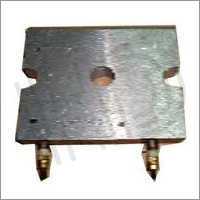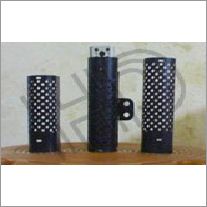Space Electric Heaters made of superior-quality aluminium cast are produced by Heating Devices and are most frequently used for heating purposes in tiny spaces. They are small in size and simple to install. Additionally, the aforementioned appliances use less energy and require little upkeep. These have a quiet heating system, a longer lifespan, high strength, and sturdy construction. Electric heaters are propelled both by electricity and by combustible materials like gas, wood, oil and pallets. These are valued for their superior performance, flawless finishing, and appealing appearance. Additionally, the aforementioned models have anti-corrosive qualities. These are available in a variety of specifications, dimensions, shapes, and styles. Our products are simple to install and maintain.
Devices that turn electrical energy into heat include electric heaters. In residences, workplaces, and other enclosed spaces, they are frequently utilised for space heating. There are many different styles and sizes of electric heaters, each with unique features and uses. Several popular types of electric heaters are listed below:
- Fan heaters: These heaters generate heat using an electric coil or ceramic element. The hot air is then quickly circulated into the room by an integrated fan. Fan heaters work well in tiny places because they are typically portable and small.
- Radiant Heaters: Radiant heaters heat nearby items and people directly by emitting infrared radiation. They are useful for localised heating or for persons who need immediate heat because they do not heat the air. Reflective panels are frequently used on radiant heaters to focus the heat in one area.
- Oil-Filled Radiators: Oil-filled radiators contain a heating element immersed in oil, which acts as a heat reservoir. When the heater is turned on, the oil heats up, and the heat is gradually released into the surrounding area. These heaters provide a longer-lasting and more even heat distribution, even after they are turned off.
- Convection Heaters: Convection heaters rely on natural air convection to distribute heat. They have a heating element that warms the air, which then rises and circulates throughout the room. Convection heaters are generally quieter and can provide consistent heat over a larger area.
- Baseboard Heaters: Baseboard heaters use convection to heat the air and are put along the baseboards of rooms. They are frequently used in houses as a primary or secondary heating source. Baseboard heaters can be targeted to heat particular spaces and are normally controlled by a thermostat.
Electric heaters are practical and simple to operate, but it’s vital to remember that they can burn up a lot of electricity. It is crucial to adhere to safety precautions, such as not leaving them unattended or putting combustible items close by. Additional features like timers, thermostat controls, and safety shut-off mechanisms might also be included with some electric heaters.



